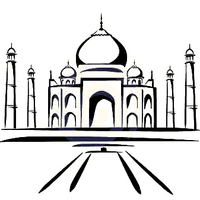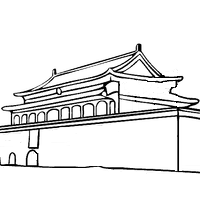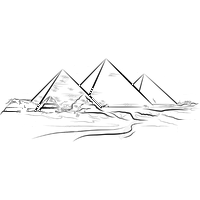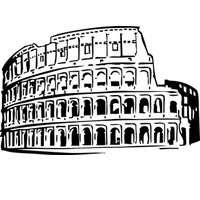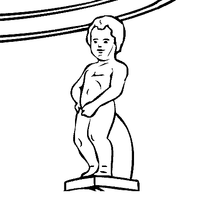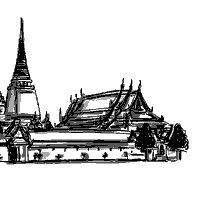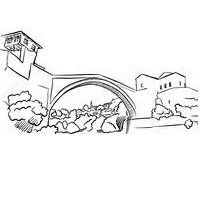"When the revolution broke out, we saw (...) the soul of ancient Egypt incarnate in the modern Egyptian (...) This one rebelled for the dignity of Egypt and proclaimed, with the tone of the man sure of himself and of what he is capable, that the independence of Egypt should be a recognized right ... (...) To what sources do the people Did he draw this stupendous confidence and this effective and triumphant assurance? "There is no doubt that he drew them from the depths of his soul (...) because, formerly, when the Egyptian launched himself to the conquest of glory, history answered him."
Thus, in the 1930s, Makram Ebeid, the leader of the Wafd, was one of the architects of the long struggle that Egypt had to wage in order to free itself completely from the guardianship that the Britain had been operating on its business since 1882.
The New Kingdom
5,000 years old, Egyptian history has seen many vicissitudes, long eclipses during which the country was subjected to the overwhelming domination of foreigners, Persian, Greek, Roman, before blending into the Arab world to which it now belongs. But she also knew hours of glory. Its civilization, one of the oldest and most refined, shone during Antiquity on the Mediterranean world. It was under the New Kingdom (from 1600 to 1085), during the eighteenth and nineteenth dynasties, that Pharaonic Egypt reached its maximum of power and radiance and extended its empire over the entire Middle East.
The objective was twofold: it was necessary to ensure on the one hand the security of Egypt vis-à-vis Asia Minor by controlling the invasion routes, on the other hand the supply of the country in indispensable commodities and materials (such as Lebanon wood).
Already, under the Middle Kingdom, the Pharaohs maintained relations with the princes of Palestine and Syria which were those of a powerful kingdom with small principalities. The campaigns of the first kings of the eighteenth dynasty enslaved Nubia to the fourth cataract of the Nile, on the edge of the Sudan, greatly increasing the cultivable area of Egypt, and Thutmosis I defeated the king of Mitanni in the Karkemish region.
But the greatest conqueror of the time was Thutmosis III (1484-1450). The pharaoh was the general-in-chief of a powerful army with infantry, a cart - borrowed from Asia - and a navy. From the year 23 to the year 42 of his reign, he whom his subjects nicknamed "the whirling comet" led seventeen expeditions in West Asia against a coalition of small states revolted by Egyptian rule, gathered around the Prince of Qadesh and extended the Egyptian empire from Napata (Nubia) in the south, to the Euphrates in the north ("that water which turns back and goes back upward" as the Egyptians, astonished by this flowing river, the reverse of the Nile, from north to south), from the Libyan oases, to the west, to the Syrian desert, to the east.
The pharaohs established with the submissive states - or their intimidated neighbors - peaceful relations, combining political treaties, matrimonial alliances and trade agreements, including the tablets found in Amama - one of the first diplomatic couriers in history - to us. restore the atmosphere. They did not force the conquered countries to take real possession. These were subject to a very liberal "protectorate" regime. They retained an indigenous government, but Egypt maintained garrisons in the strategic places. Administrators were charged to collect, for him, an annual tribute, proportionate to the local resources, yes was added to the gifts offered by the foreign princes to the pharaoh in sign of allegiance. The Egyptian Court lived in an incredible luxury. Thebes was the main capital of the East and its culture shone. The young foreign princes were brought there to be educated in the Egyptian fashion. When they returned home to succeed their fathers, they became faithful vassals of Egypt. The Pharaohs were tempted to impose, as a factor of political union, a deity of the Empire. The worship of the solar disk was widespread, especially in Syria under the name of Adon ("Master"). This is one of the senses of the religious revolution of Amenophis IV-Akhenaton, which failed as one knows before the hostility of the Theban clergy, seriously undermining the Pharaonic monarchy.
The Empire was considerably weakened, especially since a new power, the Hittite kingdom, had meanwhile destroyed the Mitanni, ally of Egypt, and coordinated in Syria the insurrection of all the States tempted by dissent.
Restoring authority
The nineteenth dynasty, from which emerges the famous line of Ramses, marked the restoration of pharaonic royalty, inside and outside Egypt. Seti I (1308-1298) continued the tradition of Tuthmosis III and succeeded in restoring Egyptian rule over most of Syria. Ramses II, his son, during a long reign of 67 years (1301-1235), after fighting the Hittites at the Battle of Qadesh (1299), restored the imperial power of Egypt in Asia, as much by his diplomatic activity only by arms. The battle of Qadesh was followed by the first international treaty of which we have the clauses, concluded between the Hittites, anxious about the progress of Assyria, and Egypt. It included a defensive and offensive alliance between the two countries, a non-aggression clause and an extradition agreement. Ramses II sealed this alliance by marrying a few years later a Hittite princess.
He could then devote most of his reign to administering the restored peace. He was a great builder. He created a new city in the north-east of the Delta, Per-Ramses, the geographical and political center of his great empire. Magnificent temples were erected throughout Egypt, adorned with bas-reliefs illustrating the glory of the Empire, battle scenes dominated by the image of the Pharaoh standing on his chariot and trampling on his enemies. Highly symbolic sign of the pride aroused by his conquests, Ramses was represented alongside the gods, and on the same scale as them. His glory was proclaimed in epic poems, which sometimes made little of the prowess of his ancestors. One of these texts appears on a stele discovered in Beith Shan: "When he seizes his bow on his chariot and grabs his arrow, he is like a star in the heart of the multitudes, strong man who slices the fallen enemies to the steps of the terce after their chiefs and their armies were slain (...). No one, never, has accomplished what he has done against foreign countries. "Moreover, as he had his cartouche engraved not only on the monuments he had himself built, but also on those of his predecessors it was long believed that he had made all the conquests commemorated on their walls. So his posthumous glory is as much a clever propaganda as an authentic military work.
Under the reigns of his successors, Asia gradually detached itself from the Empire. With the pharaonic authority rapidly declining, Egypt itself became the prey of Libyan and Syrian tribes, then Ethiopians and Assyrians, Persians and finally Greeks in the third century BC.







